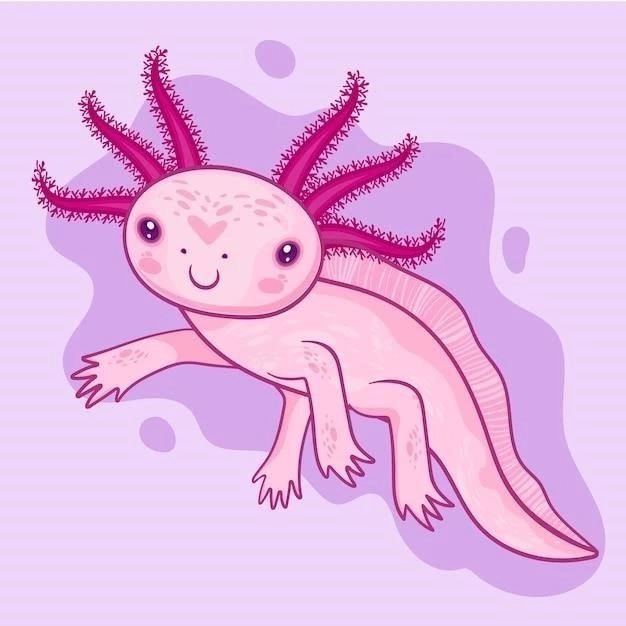The Blanket Octopus: A Deep Dive
The blanket octopus (genus Tremoctopus) is a fascinating pelagic cephalopod inhabiting the upper layers of the open ocean. Noted for their vibrant colors and the striking, web-like membranes of the females, these cephalopods exhibit extreme sexual dimorphism. While females can reach lengths of up to 2 meters, males are incredibly small, measuring a mere 2.4 centimeters.
Physical Characteristics
The blanket octopus, a denizen of the open ocean, is readily distinguished by its remarkable physical characteristics, particularly the striking difference in size and appearance between males and females, a phenomenon known as sexual dimorphism. This dimorphism, arguably the most pronounced in the animal kingdom, is a defining feature of the blanket octopus.
Female blanket octopuses are nothing short of spectacular. They are significantly larger than their male counterparts, capable of reaching lengths of up to 2 meters (6.6 feet), dwarfing the males who measure a mere 2.4 centimeters (less than an inch), comparable in size to a walnut. This extraordinary size discrepancy translates to a weight difference of at least 10,000:1, and potentially as high as 40,000:1.
Their most notable feature, from which their name originates, is the expansive, web-like membrane that stretches between their elongated dorsal arms. This membrane, often brightly colored with hues of yellow, red, blue, white, green, orange, purple, and pink, resembles a flowing cape or blanket. When threatened, the female unfurls this membranous cloak, creating the illusion of a much larger size to intimidate potential predators.

The underside of their arms is adorned with suction cups, sensitive to both touch and taste, crucial for navigating their environment and detecting prey. Their mantle, the muscular sac that houses their internal organs, is typically smooth. Their head, slightly narrower than the mantle, features two large, complex eyes, providing them with excellent vision in the dimly lit depths they often inhabit.
In stark contrast to their flamboyant female counterparts, male blanket octopuses are small and less visually striking. Lacking the characteristic web-like membrane of the females, they have a more streamlined appearance. Their mantle is smooth and bowl-shaped, with a head slightly wider than the mantle. Their coloration tends to be less vibrant, providing camouflage in the open ocean.
This extraordinary difference in size and appearance between sexes reflects differing evolutionary strategies. While females have evolved to be larger and more visually imposing to deter predators and attract mates, males prioritize agility and camouflage to avoid predation and efficiently locate females in the vastness of the open ocean.
Sexual Dimorphism
The blanket octopus (genus Tremoctopus) exhibits one of the animal kingdom’s most extreme examples of sexual dimorphism, a biological phenomenon where males and females of the same species display remarkable differences in size, appearance, and even behavior. This striking disparity is central to the blanket octopus’s unique life history and reproductive strategies.
The most obvious manifestation of sexual dimorphism in the blanket octopus is the dramatic difference in size. Females can grow to an impressive 2 meters (6.6 feet) in length, dwarfing their male counterparts, which measure a mere 2.4 centimeters (less than an inch) – a size difference of two orders of magnitude. To put this in perspective, a female blanket octopus can be as large as a human adult, while the male is comparable to a grape. This size disparity translates to an astounding weight difference, with females outweighing males by a factor of at least 10,000 to 40,000.

Distinctive Appearances:
Beyond sheer size, male and female blanket octopuses differ significantly in appearance. The females are renowned for their large, web-like membranes, resembling a colorful blanket or cape, which stretch between their elongated dorsal arms. This striking feature, absent in males, is key to their defense mechanism. When threatened, a female unfurls her “blanket,” creating the illusion of a much larger creature and deterring potential predators. Males, lacking this flamboyant display, rely on camouflage, their smaller size, and agility to evade danger.
This extraordinary sexual dimorphism is thought to be driven by differing evolutionary pressures on males and females. The females’ large size and conspicuous “blanket” likely evolved as strategies to enhance survival and reproductive success. Their larger size deters predators, and the webbed membrane, which they can detach if necessary, serves as a distraction or a physical barrier. Additionally, their larger size allows them to produce and carry a greater number of eggs, increasing their reproductive potential.
In contrast, males, being significantly smaller and less visually striking, are less likely to attract predators. Their diminutive size, coupled with agility, allows them to efficiently search for and mate with the larger, less mobile females in the vast expanse of the open ocean. Their reproductive strategy prioritizes finding and fertilizing females over direct competition with other males.

In conclusion, the extreme sexual dimorphism exhibited by the blanket octopus is a testament to the power of natural selection in shaping the extraordinary diversity of life on Earth. This unique adaptation highlights the contrasting evolutionary pressures faced by males and females and the diverse strategies they have developed to ensure their survival and reproductive success in the vast and often unforgiving environment of the open ocean.
Unique Hunting and Defense Mechanisms
The blanket octopus, a fascinating denizen of the open ocean, employs an arsenal of unique and intriguing hunting and defense mechanisms, reflecting its remarkable adaptations to life in the pelagic realm. This delicate-looking cephalopod is anything but defenseless, employing a combination of camouflage, mimicry, and borrowed weaponry to navigate a world teeming with predators and prey.
Females: Masters of Deception and Defense:
The larger and more visually striking females rely heavily on their impressive size and their remarkable webbed membrane, the “blanket,” for defense. When threatened, a female unfurls this expansive membrane, creating the illusion of a much larger and more formidable creature. The sudden transformation from a seemingly innocuous octopus to a billowing, colorful apparition can startle and deter even the most determined predator.
Furthermore, females can detach portions of their webbed membrane, sacrificing a piece of themselves as a decoy to distract and confuse predators while they make their escape. This remarkable adaptation, akin to a lizard shedding its tail, highlights the lengths to which the blanket octopus will go to ensure its survival.
Adding another layer to their defensive repertoire, female blanket octopuses exhibit a fascinating symbiotic relationship with the Portuguese man o’ war, a highly venomous colonial organism often mistaken for a jellyfish. Blanket octopuses are immune to the man o’ war’s potent sting and have been observed ripping off tentacles laden with stinging nematocysts. They then wield these venomous appendages as weapons, effectively employing borrowed weaponry for both defense and hunting.

Male blanket octopuses, lacking the size and dramatic defenses of their female counterparts, rely on a different set of tactics. Their smaller size and lack of the expansive “blanket” make them less conspicuous to predators. Their agility allows them to quickly evade threats, darting through the water with impressive speed and maneuverability.
Furthermore, their coloration, often less vibrant than that of the females, provides camouflage in the open ocean, making them harder for predators to detect. Their hunting strategies likely rely on stealth and ambush, using their agility and camouflage to approach prey undetected.
A Testament to Evolutionary Adaptation:
The blanket octopus’s unique hunting and defense mechanisms, from the females’ dramatic “blanket” display and venomous weaponry to the males’ agility and camouflage, are a testament to the power of natural selection in shaping the extraordinary diversity of life in the ocean. These adaptations highlight the constant interplay between predator and prey and the diverse strategies that marine organisms have evolved to survive and thrive in a challenging and ever-changing environment.
Reproduction and Lifespan
The blanket octopus, with its extreme sexual dimorphism and captivating beauty, possesses a unique and fascinating reproductive strategy, one that highlights the delicate balance between survival and perpetuation of the species in the vast expanse of the open ocean. Their lifespan, though relatively short, encompasses a dramatic chapter in the intricate web of life that characterizes this unique cephalopod.

The reproductive journey of the blanket octopus begins with a somewhat perilous encounter for the significantly smaller male. Once he locates a female, a challenging task in the vastness of the open ocean, he initiates mating by approaching cautiously. The male’s third right arm, specially adapted for reproduction, is called the hectocotylus. This arm carries spermatophores, packets containing sperm. During mating, the male uses his hectocotylus to transfer spermatophores to the female’s mantle cavity, a process that can be fatal for him. In some cases, the hectocotylus detaches from the male’s body, remaining within the female.
A Mother’s Dedication:
After mating, the female blanket octopus carries the fertilized eggs, sometimes numbering in the tens of thousands, within her mantle cavity. She dedicates herself entirely to brooding her offspring, forgoing feeding and becoming increasingly vulnerable as she protects her precious cargo. The female carefully tends to the developing embryos, ensuring they receive adequate oxygen and protection. This period of maternal care can last for several weeks to months, depending on environmental conditions.

Once the eggs are fully developed, tiny, planktonic hatchlings emerge, beginning their independent lives in the open ocean. These miniature versions of the adults are equipped with the instincts and adaptations necessary to navigate the challenges of their environment. The hatchlings will grow rapidly, undergoing significant physical changes as they mature.
A Fleeting Existence:
The blanket octopus has a relatively short lifespan, with females living for an estimated 3 to 5 years and males typically surviving for only 1 to 2 years. The males’ shorter lifespan is likely linked to the high energy expenditure and risks associated with mating. The females’ lifespan, while longer, is ultimately limited by the demands of reproduction, as they often succumb to the stresses of brooding and protecting their eggs.

In conclusion, the blanket octopus’s reproduction and lifespan, though seemingly fleeting, represent a remarkable adaptation to the challenges of life in the open ocean. Their unique reproductive strategy, with its high stakes for males and unwavering dedication from females, ensures the continuation of their lineage in a vast and often unforgiving environment.










